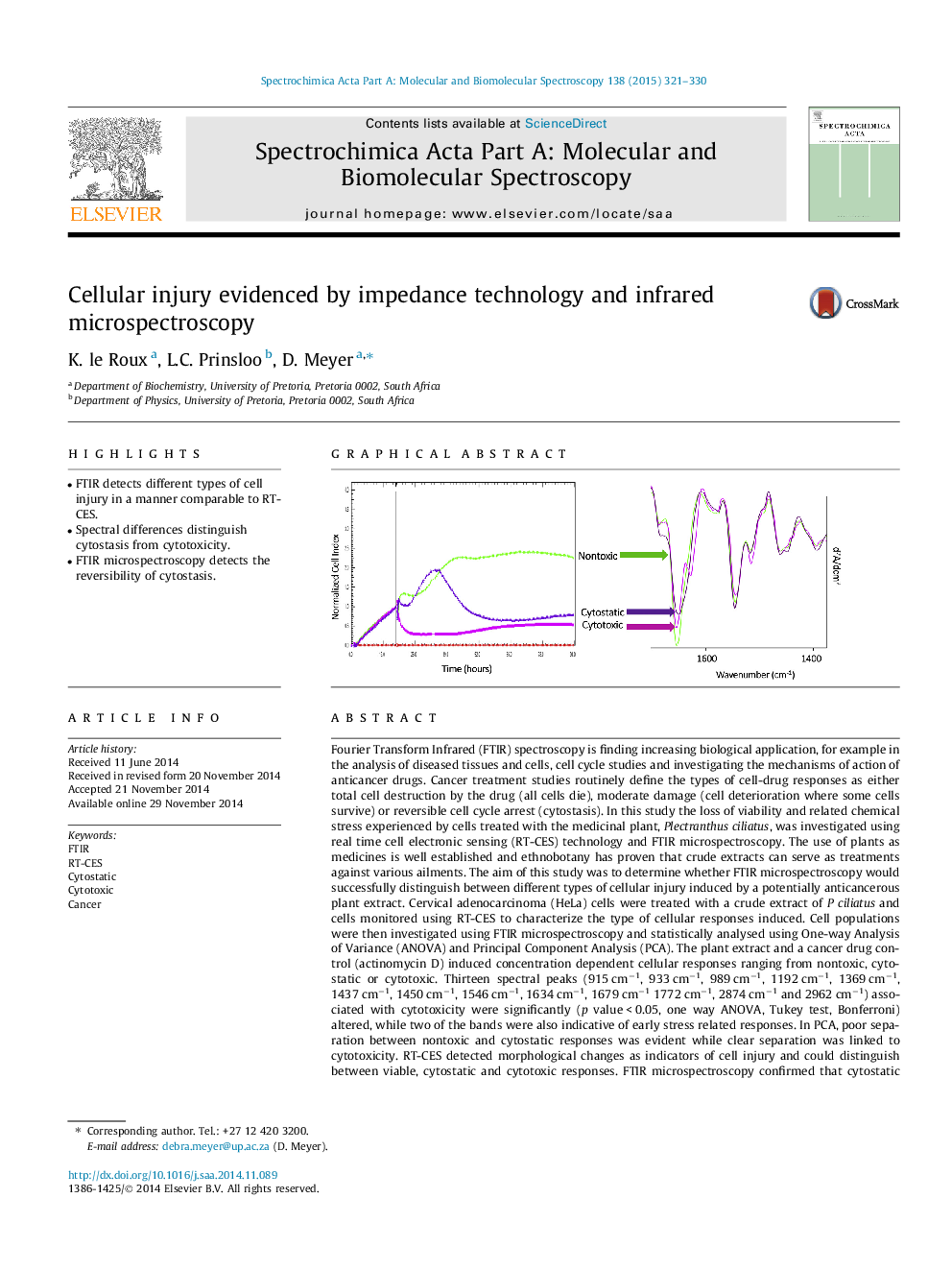| کد مقاله | کد نشریه | سال انتشار | مقاله انگلیسی | نسخه تمام متن |
|---|---|---|---|---|
| 1229068 | 1495231 | 2015 | 10 صفحه PDF | دانلود رایگان |
• FTIR detects different types of cell injury in a manner comparable to RT-CES.
• Spectral differences distinguish cytostasis from cytotoxicity.
• FTIR microspectroscopy detects the reversibility of cytostasis.
Fourier Transform Infrared (FTIR) spectroscopy is finding increasing biological application, for example in the analysis of diseased tissues and cells, cell cycle studies and investigating the mechanisms of action of anticancer drugs. Cancer treatment studies routinely define the types of cell-drug responses as either total cell destruction by the drug (all cells die), moderate damage (cell deterioration where some cells survive) or reversible cell cycle arrest (cytostasis). In this study the loss of viability and related chemical stress experienced by cells treated with the medicinal plant, Plectranthus ciliatus, was investigated using real time cell electronic sensing (RT-CES) technology and FTIR microspectroscopy. The use of plants as medicines is well established and ethnobotany has proven that crude extracts can serve as treatments against various ailments. The aim of this study was to determine whether FTIR microspectroscopy would successfully distinguish between different types of cellular injury induced by a potentially anticancerous plant extract. Cervical adenocarcinoma (HeLa) cells were treated with a crude extract of Pciliatus and cells monitored using RT-CES to characterize the type of cellular responses induced. Cell populations were then investigated using FTIR microspectroscopy and statistically analysed using One-way Analysis of Variance (ANOVA) and Principal Component Analysis (PCA). The plant extract and a cancer drug control (actinomycin D) induced concentration dependent cellular responses ranging from nontoxic, cytostatic or cytotoxic. Thirteen spectral peaks (915 cm−1, 933 cm−1, 989 cm−1, 1192 cm−1, 1369 cm−1, 1437 cm−1, 1450 cm−1, 1546 cm−1, 1634 cm−1, 1679 cm−1 1772 cm−1, 2874 cm−1 and 2962 cm−1) associated with cytotoxicity were significantly (p value < 0.05, one way ANOVA, Tukey test, Bonferroni) altered, while two of the bands were also indicative of early stress related responses. In PCA, poor separation between nontoxic and cytostatic responses was evident while clear separation was linked to cytotoxicity. RT-CES detected morphological changes as indicators of cell injury and could distinguish between viable, cytostatic and cytotoxic responses. FTIR microspectroscopy confirmed that cytostatic cells were viable and could still recover while also describing early cellular stress related responses on a molecular level.
Figure optionsDownload as PowerPoint slide
Journal: Spectrochimica Acta Part A: Molecular and Biomolecular Spectroscopy - Volume 138, 5 March 2015, Pages 321–330
